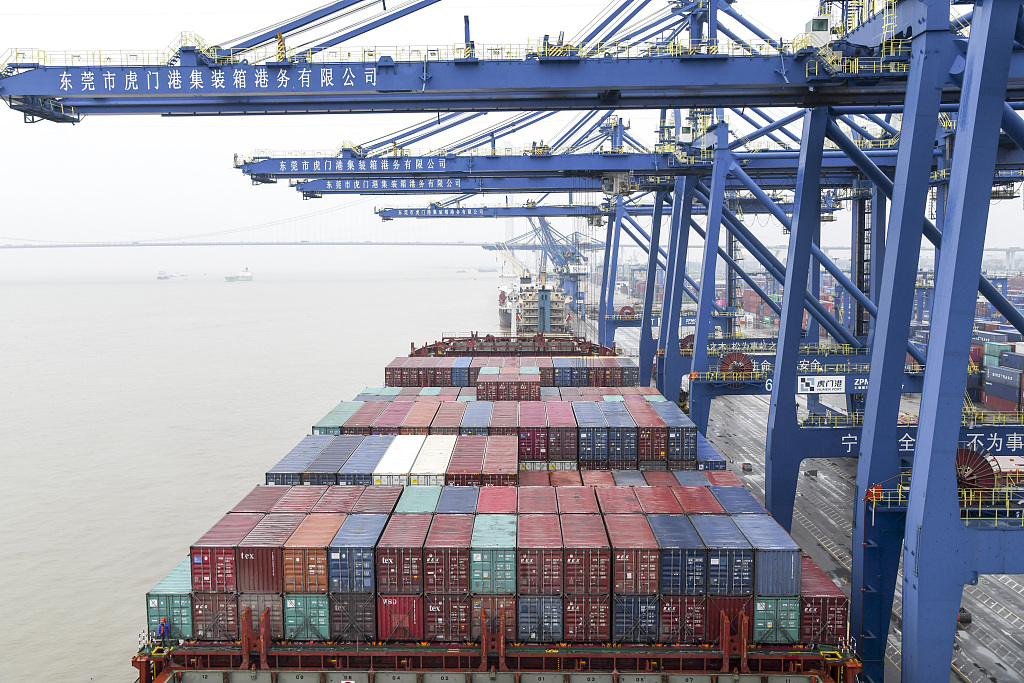Although the US initially raised tariffs and exerted pressure on China, its impact remains under control. The earlier tariffs causing the US to suffer more than China.
The tariff measures on both sides had revealed that the impact on US exports is significantly greater than on China before the additional tariffs were imposed.
In 2018, US imports worth $250 billion in goods from China grew 9.8 percent year-on-year instead of experiencing a decline, while imports have fallen by 24.2 percent year-on-year during Q1 2019.

(Photo: VCG)
In contrast, tariffs on China imports totaling $110 billion worth of goods from the US fell 4.1 percent year-on-year in 2018, and dropped 39.8 percent for Q1 2019, revealing the US has suffered more from the earlier tariffs.
China has remained under control in the face of additional US tariffs. By setting limitations and responding through domestic measures, China’s declining US exports will be much lower than $160 billion. Even if the maximum decline is accounted for, it will have little impact on the total export volume compared with an annual volume of $2.49 trillion.
Additionally, China is expected to maintain rapid export growth with other countries and regions should US exports decrease.
China’s dependence on related goods in the US market is declining as the country develops and diversifies its export market.
After reviewing the US tariffs on $34 billion, $16 billion, $200 billion, and another $300 billion worth of goods, following relevant hearing procedures, the US has increased its goods imported from China and subsequently its dependence on the country.
The expenses generated from the tariff hikes will ultimately become a burden shared among US producers, buyers, and domestic consumers.
By contrast, China’s countermeasures have had a slight impact on their own. China imposed additional tariffs on select US products worth $60 billion which had been previously slapped with tariffs on June 1.
Compared with US maximum pressure from self-loss, China imposed tariffs on products ranging from five to 25 percent to increase impact on the US while minimizing domestic market tremors.
Domestic impact from such countermeasures can be mitigated through import expansion with other countries and increasing domestic supplies.
Throughout the past year, in the face of US bully tactics that not only included repeated maximum pressure but also breaking earlier commitments, China has become more relaxed when confronting the so-called US “art of trading.”
Now that the compressive strength of China’s economic society has been validated, the effects of such maximum pressure have decreased exponentially.
Should the US impose tariffs on $300 billion worth of goods, it will inevitably increase purchasing prices for American consumers and manufacturers, thus raising its national consumer price index.
Against the backdrop of profit loss among US farmers and high-tech companies, and a declining disposable income per capita, a rising US consumer price index will impose a heavy burden on its people, and the US government would subsequently face greater political pressure.
Economic globalization is an inevitable trend and an aspiration shared by everyone. It reflects a resistance against history’s tide and will always remain steadfast regardless of the will expressed from any country.
The trade war that was started by the US solves nothing. It runs counter to the interests of both nations and their citizens. The action itself is destined to be cast aside by history.
(The authors are the Dean of the Institute, China Ministry of Commerce, and the Director of the Institute of Foreign Trade, China Ministry of Commerce.)
(Compiled by Bao Han, Elaine Yue Lin, and Chelle Wenqian Zeng)


